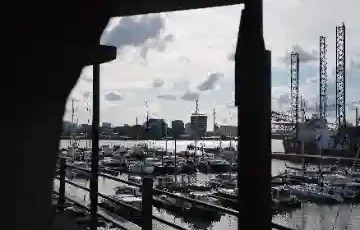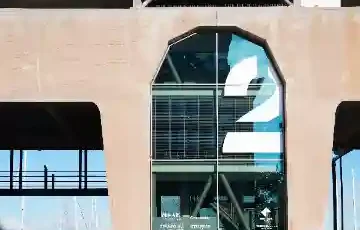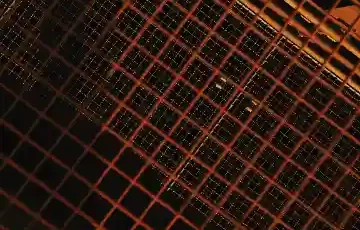Dutch media law regulates information dissemination through newspapers, radio, television and the internet by balancing freedom of expression under Article 10 ECHR with privacy protection under Article 8 ECHR. This legal field encompasses rules regarding copyright, portrait rights, rectification requests and reputation damage, where courts determine case-by-case which fundamental right prevails.
The core of media law consists of continuously weighing two fundamental rights that regularly clash. On one hand, freedom of expression protects journalists, publishers and citizens who disseminate information. On the other hand, the right to privacy and protection of honor and reputation safeguards individuals against unlawful statements. This tension makes media law a dynamic legal field requiring tailored approaches for each case.
Dutch media law continuously evolves through new digital media. Social media platforms, online channels and international streaming services create daily legal challenges. Nevertheless, the Dutch Media Act remains the statutory framework for traditional broadcasters and commercial providers.
What constitutes media law under Dutch law?
Media law in the Netherlands encompasses all legislation regulating publication and dissemination of information through media channels, including copyright, portrait rights, privacy regulations, advertising requirements and protection against defamation according to the Criminal Code.
This legal field consists of multiple disciplines that together form the media legal system. Therefore, practitioners often refer to it as an umbrella term for various legal areas affecting media statements. The primary components include copyright for protection of creative works, portrait rights for personal images, and privacy law for personal data processing.
Moreover, media law regulates relationships between public and commercial broadcasters through the Media Act. This legislation determines, for instance, how much advertising time per hour is permissible and which requirements apply to program offerings. Consequently, program sponsorship also follows specific rules to ensure independent journalism.
Advertising law forms an essential component as well. Misleading advertising statements can be challenged not only through civil proceedings but also lead to sanctions from the Dutch Advertising Code Committee. Particularly online advertising via influencers and social media platforms creates new legal discussions regarding transparency and recognizability.
Finally, media law addresses issues surrounding reputation damage, false reporting and rectification obligations. When a journalist or media outlet publishes incorrect accusations, the affected party can initiate swift legal action through summary proceedings. In approximately 65% of these procedures, the question arises whether sufficient opportunity for response was provided.
When does a media statement become unlawful in the Netherlands?
A media statement becomes unlawful when it damages someone’s honor or reputation without sufficient factual substantiation, or when privacy violation does not outweigh the public interest of the information according to Article 6:162 Dutch Civil Code assessment (tort).
Courts weigh both fundamental rights against each other in every case. This involves no standard formula, but rather a context-dependent assessment of all circumstances. Therefore, critical statements are permitted, even when sharp or confrontational. The Dutch Constitution and ECHR explicitly protect this freedom.
However, journalists and media must substantiate their statements with facts. The more serious the accusation, the stronger the evidence must be. For instance, a documentary revealing criminal activities requires concrete evidence such as documents, witness statements or audiovisual material. Mere suspicions or rumors do not suffice.
Public interest also plays a crucial role in this assessment. Does the publication concern a socially relevant topic such as corruption, environmental pollution or abuse of power? Then freedom of expression weighs heavier. However, if the matter concerns private issues without societal relevance, privacy rights receive stronger protection.
The prominence of individuals also influences the boundaries of permissibility. Public figures who actively seek publicity must tolerate more criticism than ordinary citizens. Nevertheless, even well-known Dutch individuals possess a private sphere deserving protection. Case law demonstrates that even politicians and celebrities retain rights to protection of their personal sphere.
Timing constitutes another assessment element. Media must provide involved parties the opportunity to respond to accusations before publication. This right-of-reply principle ensures all sides of a story receive illumination. When media neglect this journalistic diligence, courts frequently rule unlawfulness.
How does rectification work under Dutch law for unlawful publications?
An unlawfully published article or report can cause enormous reputation damage within several days. Speed therefore proves essential. Through summary proceedings before a preliminary relief judge, an injured party can obtain judgment regarding unlawfulness and rectification obligation within 7 to 14 days.
The court assesses whether accusations at the time of publication found sufficient support in available factual material. When this substantiation was absent, an order for rectification typically follows. This rectification must correct the false reporting and limit damage as much as possible.
For online publications, rectification requires additional attention. The rectification text, its placement, publication duration and even font size and typeface demand careful considerations. A rectification at the bottom of a website in small font does not suffice. Courts often require the rectification to appear in the same prominent location as the original article.
Additionally, judges can order complete removal of the original article. This applies especially when rectification provides insufficient relief because accusations are so serious that reputation restoration becomes impossible with only a correction. Otherwise, Google and other search engines continue displaying the article in search results for years.
The duration of summary proceedings averages 3 to 4 weeks from summons to judgment. In highly urgent cases, emergency summary proceedings can lead to preliminary judgment within several days. This speed makes summary proceedings the most effective legal remedy for acute reputation damage.
What compensation is possible for reputation damage under Dutch law?
Victims of unlawful media statements are entitled to compensation for reputation damage according to Article 6:106 Dutch Civil Code, whereby courts often reference the Non-Pecuniary Damages Guidelines with amounts varying from several thousand to tens of thousands of euros depending on severity and impact.
Non-pecuniary damages compensate immaterial damage to honor and reputation. Courts possess substantial discretion when determining amounts. Factors weighing in the assessment include the severity of accusations, publication distribution, duration of online availability and the extent to which rectification has occurred.
In practice, courts apply the Non-Pecuniary Damages Guidelines as reference framework. This guideline contains hundreds of case examples regarding reputation damage with concrete amounts. Relatively minor cases lead to non-pecuniary damages between € 2,500 and € 5,000. Serious accusations of criminal activities can yield € 15,000 to € 25,000.
Besides non-pecuniary damages, material compensation qualifies when unlawful publication causes demonstrable financial loss. Entrepreneurs can, for instance, claim revenue losses when clients leave due to negative publicity. However, the causal relationship between publication and revenue decline must be made plausible through numerical evidence.
Additionally, legal costs and attorney fees belong to damage compensation. Actual attorney costs often exceed the court-awarded liquidation rate. Therefore, parties can claim full legal cost reimbursement for substantial interests based on Article 1019h Code of Civil Procedure.
Do you need to strengthen your legal position after an unlawful publication? Specialized lawyers in media law analyze your situation and advise on rectification and compensation strategies tailored to your specific circumstances.
What constitutes defamation and slander under Dutch legislation?
Defamation according to Article 261 Dutch Criminal Code involves intentionally damaging someone’s honor or reputation by imputing a fact with the purpose of giving it publicity, while slander occurs when the perpetrator additionally knows the accusation is false.
The distinction between defamation and slander lies in knowledge about truth. With defamation, the perpetrator may believe his accusation is true, but sufficient evidence is lacking. With slander, the perpetrator knows his statement is untrue yet publishes it nonetheless. Slander carries heavier penalties than defamation.
Libel forms a variant where defamation occurs through disseminated or publicly disclosed writings. In the digital era, social media posts, blogs and online articles fall under this concept. Therefore, deliberately spreading accusations through these channels can justify criminal prosecution.
Filing complaints for defamation or slander is possible, but experience shows the Public Prosecution Service rarely proceeds with prosecution. In approximately 85% of complaints, no further action follows because priority lies with more serious offenses. Consequently, civil proceedings often provide more effective protection.
Penalties for defamation reach maximum six months imprisonment or a third-category fine (maximum € 8,200). For slander, courts can impose maximum two years imprisonment. In practice, conditional sentences or fines follow, rarely actual imprisonment.
An important defense against defamation and slander is “general interest.” When a journalist makes statements in the public interest and has conducted sufficient investigation, he can successfully invoke this exception. Courts then assess whether the journalist operated diligently.
How do you remove false Google reviews in the Netherlands?
False reviews on Google Maps can seriously damage a business’s online reputation within hours. However, removing fake reviews often proves a time-consuming and frustrating endeavor. Google maintains a reporting system where owners can flag reviews as inappropriate, but response time often spans weeks and many reports do not result in removal.
When Google refuses cooperation, summary proceedings remain the only effective solution. The preliminary relief judge can then order Google to remove false reviews. Simultaneously, disclosure can be claimed of personal details and IP addresses associated with Google accounts that posted fake reviews.
The legal basis for removal lies in tort according to Article 6:162 Dutch Civil Code. False reviews damage reputation and can cause revenue losses. Google functions as an intermediary responsible for removing unlawful content after proper notification.
Evidence plays a crucial role. Entrepreneurs must make plausible that reviews are false. Indicators include multiple negative reviews within short timeframes, reviews from accounts without previous review activity, or reviews containing evidently incorrect facts. In approximately 70% of proceedings where this evidence exists, courts grant removal requests.
Costs of summary proceedings vary between € 3,000 and € 7,000 including attorney fees and court fees. This investment often outweighs financial damage that false reviews can cause for years. Potential clients trust online reviews for 75% when choosing service providers.
What role does the Media Act play in the Dutch jurisdiction?
The Dutch Media Act regulates organization, financing and duties of public broadcasters in the Netherlands. This legislation ensures independence, diversity and quality of media offerings. The Media Authority supervises compliance and can impose sanctions for violations.
Advertising and sponsorship rules form an important component of the Media Act. Commercial broadcasters may transmit maximum 12 minutes of advertising per hour, while public broadcasters face stricter limitations. Surreptitious advertising where products are integrated into programs unnoticed is explicitly prohibited.
Protection of minors also receives attention in the Media Act. Programs containing violence, sexuality or other content inappropriate for children must be provided with viewing classifications and may only be broadcast during specific times. Violations can lead to fines up to € 900,000 or 10% of annual revenue.
The Media Act adapts to European regulations, notably the revised Audiovisual Media Services Directive. This directive applies to traditional broadcasters, video-on-demand services and video platform services like YouTube. Dutch providers must comply with these European minimum standards.
The country-of-origin principle determines that audiovisual media service providers fall under supervision of the country where they are established. International streaming services operating from the Netherlands therefore fall under Dutch media supervision. This principle prevents forum shopping where providers deliberately choose countries with lax regulations.
What are current developments in Dutch online media law?
Online platforms and social media continuously create new legal challenges for media law. Fake news, hate speech and deepfakes form growing threats to digital information provision. Research in 2024 reveals that approximately 40% of Dutch citizens struggle distinguishing authentic information from fake news.
The Digital Services Act (DSA) introduces new obligations for online platforms. Large platforms must be transparent about their moderation policies and users must be able to complain about removed content. This European regulation applies since February 2024 and grants users more rights against Facebook, X (formerly Twitter) and other platforms.
The “right to be forgotten” remains a current discussion point. European citizens can request search engines to remove search results with outdated or irrelevant information. Google receives hundreds of thousands of removal requests from the Netherlands annually. The balance between freedom of expression and privacy rights remains tailored work per case.
Artificial intelligence and algorithms increasingly determine which information users see online. This raises questions about transparency and responsibility. The proposed European Media Freedom Act aims to protect media independence against both government influence and algorithmic manipulation.
Intermediary liability forms a complex legal question. When are platforms responsible for user-posted content? Case law develops rules regarding notice-and-takedown procedures where platforms are obligated to remove unlawful content after proper notification.
Contact specialized media law attorneys for advice regarding your specific situation with online publications, platform liability or cross-border media matters.
How does copyright protect creative media content in the Netherlands?
Copyright forms the legal foundation for protection of journalistic works, photographs, videos and other creative content. This right arises automatically upon creation without registration requirement. Creators retain exclusive rights to reproduction, distribution and disclosure of their works for 70 years after death.
Quotation rights provide media limited space to use copyrighted works without permission. Journalists may use quotations for news reports, criticism or reviews. However, scope must be proportional and source attribution is mandatory. Complete reproduction does not fall under quotation rights.
License agreements under Dutch law regulate commercial exploitation of copyrights. Photographers, videographers and writers often grant media usage rights against compensation. These agreements specify territory, duration and manner of use. Unclear arrangements regularly lead to disputes regarding exceeding permitted use.
Portrait rights under Dutch law protect individuals against unwanted publication of their likeness. Permission is always required for commercial purposes. For editorial publications, an assessment applies between news value and privacy. Well-known individuals in public functions must tolerate more than ordinary citizens.
Copyright infringement can lead to damages and rectification. Courts often award fixed damages of several thousand euros per infringement. For large-scale commercial exploitation, these amounts can reach tens of thousands of euros. Additionally, copyright holders can demand permanent removal of infringing content.
What legal protection do journalist sources receive under Dutch law?
Source protection forms an essential pillar of press freedom and truth-finding. Journalists may refuse to disclose their sources, even in judicial proceedings. This protection is anchored in Article 10 ECHR and Dutch legislation. Without source protection, whistleblowers and informants would hesitate sharing information.
Courts can order source disclosure in exceptional cases when overriding interests justify this. This applies, for instance, to life-threatening situations or serious crimes. However, in approximately 95% of cases, courts respect source confidentiality.
Technological developments threaten source protection. Digital communication leaves traces that make sources identifiable. Hackers, intelligence services and investigative authorities can digitally track journalists and their sources. Therefore, secure communication channels and encryption are essential for modern journalism.
Searches at journalists require restraint according to established case law. Authorities must make plausible that other investigative methods have failed before they may search journalistic sources. Seizure of journalistic material is only permitted under strict conditions.
Internationally, source protection varies considerably. American journalists enjoy less absolute protection than European colleagues. This creates dilemmas for Dutch media cooperating internationally or having sources in countries with weaker source protection.
How do summary proceedings work in Dutch media cases?
Summary proceedings provide swift preliminary relief for acute legal disputes. In media cases, time pressure often plays a role because reputation damage grows daily. The preliminary relief judge rules within 7 to 14 days after summons regarding removal, rectification or publication prohibition.
The urgent interest must be made plausible. For already published articles, this urgent interest is evident: every day the unlawful publication remains online causes continuing damage. For announced publications, the plaintiff must make plausible that publication causes irreparable damage.
Evidence plays a crucial role. Screenshots, video recordings and written statements must be submitted with the summons. Courts assess whether the plaintiff has sufficiently demonstrated that the publication is unlawful. Definitive proof is not required; plausibility suffices.
Oral hearings typically last 30 minutes to one hour. Both parties receive opportunity to explain their positions. The preliminary relief judge then poses questions and can encourage parties toward settlement. In approximately 25% of media cases, parties reach settlement during the hearing.
Judgment usually follows within one to two weeks after the hearing. Courts can order immediate compliance with penalty payments for violations. Standard penalty payments amount to € 1,000 to € 5,000 per day with a maximum of € 50,000 to € 250,000. These amounts effectively motivate compliance.








